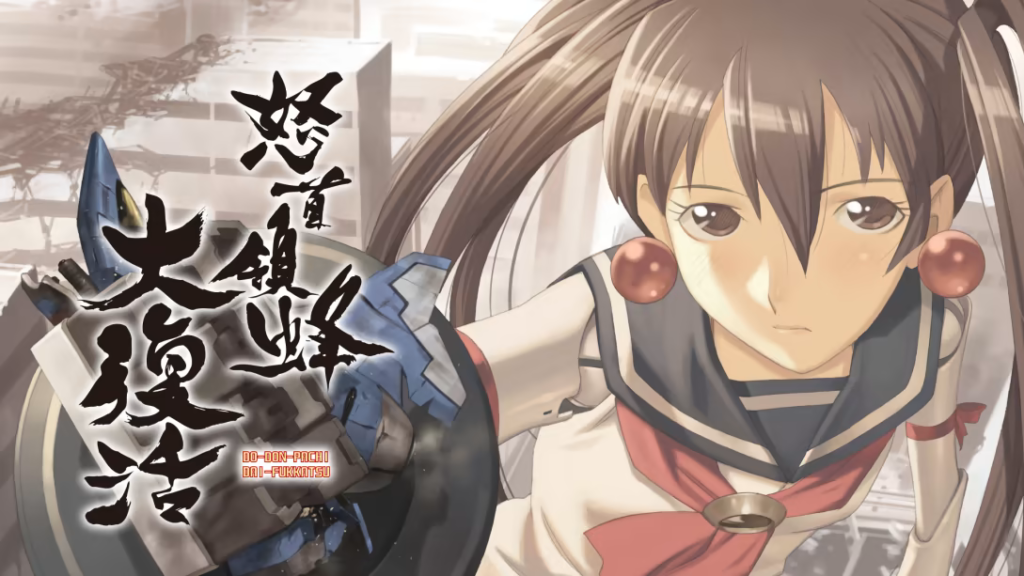
LiveWire Inc. is back! Hot on the heels of the recent release of ESPGaluda 2 on the Switch (review here) comes yet another blockbuster Cave release. Us Westerners have finally been treated to the domestic release of DoDonPachi Resurrection! Technically, there was a Western release of DDP Resurrection for the European Xbox 360, but North America never managed to get one until now. But what the heck is it? Well, DoDonPachi Resurrection is a multi-mode re-release of DoDonPachi DaiFukkatsu, which literally translates to ‘Angry Leader Bee Great Resurrection’ (and yes, that answers absolutely nothing). What you’re really getting though, is possible the penultimate bullet hell shmup from the venerated devs over at Cave, fine tuned to utter glory by the magicians at LiveWire and released at a cut rate price on the Switch!
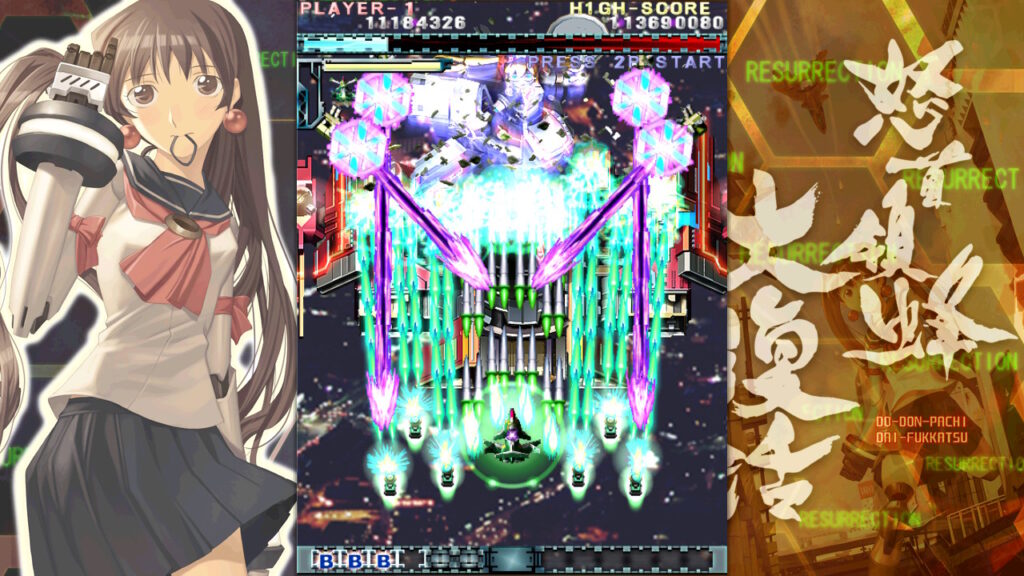
DoDonPachi DaiFukkatsu (DDPDFK for short) is a spectacular bullet hell game. Originally released in 2008, it is the fifth entry in the DonPachi series and possibly the best one. As with all DDP games, DDPDFK has you piloting a spaceship through waves of pink and blue bullets all while trying to maximize your score and collect Hyper powerups and Bee tokens. Sound confusing? If you’ve never played a bullet hell game, this might be a bit technical, but these are some of the hardest of the hardcore games out there and they practically have their own language to accompany the gameplay.
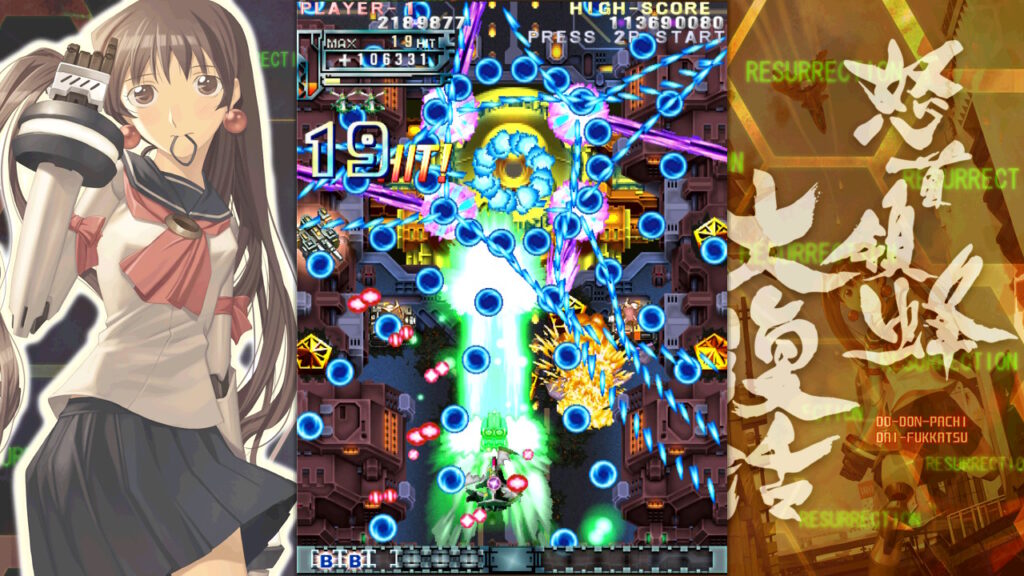
In Resurrection, you have your choice of three different ships, each with a different bullet pattern ranging from a tight spread to a full screen one. You’re powered all the way up right from the get go, so no pesky powerup icons to grab either. It’s just you and a ridiculous number of bullets flowing at the equally ridiculous number coming back at you. There are multiple modes of fire. Autofire (which you’ll need), and a single shot which you can hold down to tighten your shot and focus on a single enemy to destroy those pesky larger enemies. You’re also given bombs that cancel bullets and a charge shot that allows you to absolutely decimate the enemy with blisteringly powerful lasers, generating a spectacular shower of medals to multiply your score. You can also earn Hypers which float down from the screen, magnifying your blasts and score by a massive factor. It’s an absolute barrage on the senses every step of the way and few things are as gratifying as managing a level in Resurrection with a No Miss (not taking a single hit).
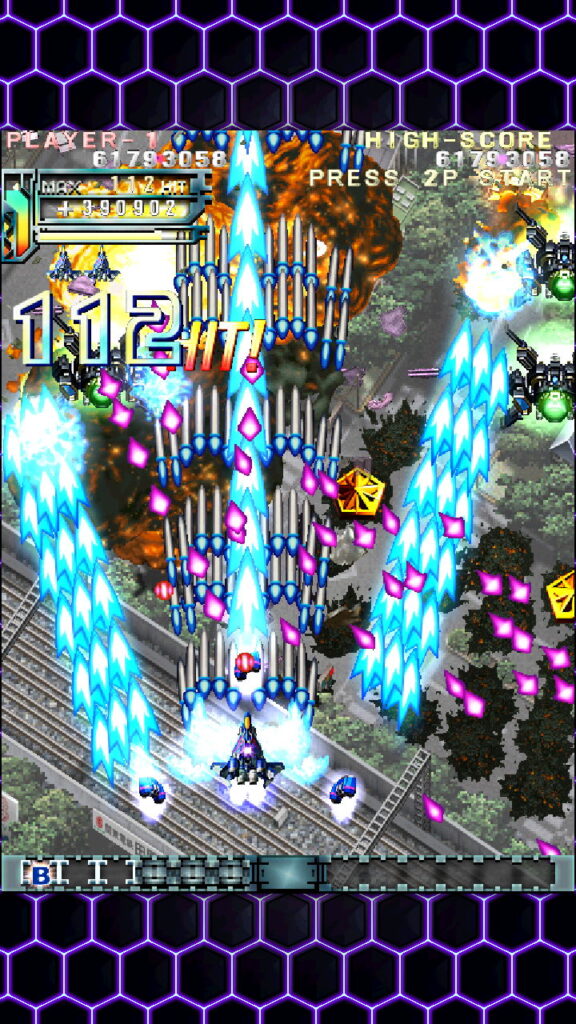
Now, if that were all that were going on with Resurrection, it would still be a spectacular game. But it’s only the tip of the iceberg here. There are TONS of modes here as well. Standard DDPDFK is version 1.5, but the Matsuri Edition of DDPDFK 1.51 is also included, a special version made for the Japanese Cave Festival in 2010. There are a ridiculous number of tiny adjustments that you can Google, but it all adds up to an Arrange mode of the original that subtly changes the gameplay and creates a fresh version of the game. There’s also a B Arrange Mode that lets you mess with the game’s parameters, and an Arrange A mode that lets you play the ship (and game mechanics) from DoDonPachi DaiOuJou, the 2002 game which preceded DDPDFK. And that alone is worth the price of admission. Whew. Oh wait, there’s also a Novice mode that limits the bullets and challenge for beginners to hone their skills on before cutting their teeth on the main games. So yeah, that makes five version of the main game, each with different parameters, scoring mechanisms and subtleties. If you’re not used to these sorts of games, you might not be able to feel the difference from one game to the next at first, but for old pros, each remix just ‘feels’ different too. It’s subtle but noticeable and tricks that work on one title definitely won’t work on the next.

That’s a pretty good package right? Well, we’re not done yet! Just a couple more shots! On top of those five modes, there’s a major remake of DDPDFK included on this collection as well, DoDonPachi DaiFukkatsu Black Label! If you’re unfamiliar with the Black Label games, when Cave released their arcade boards, they would later revise the gameplay so that the arcade experience stayed fresh, rebalancing the mechanics and scoring while keeping the core levels intact. These were called Black Label games because you literally physically sent the PCB (printed circuit board) back to Cave in Japan and they would replace the chipset on the board with the upgraded Black Label version and send it back to you. Black Label games are quite rare since only a handful of operators sent the boards back and the remixes are by and large spectacular, making them highly sought after for both collecting and gameplay. Fortunately, Resurrection includes DDPDFK Black Label, and it’s absolutely amazing, adding a more intense set of bullet patterns and using the “Retsudo” system.
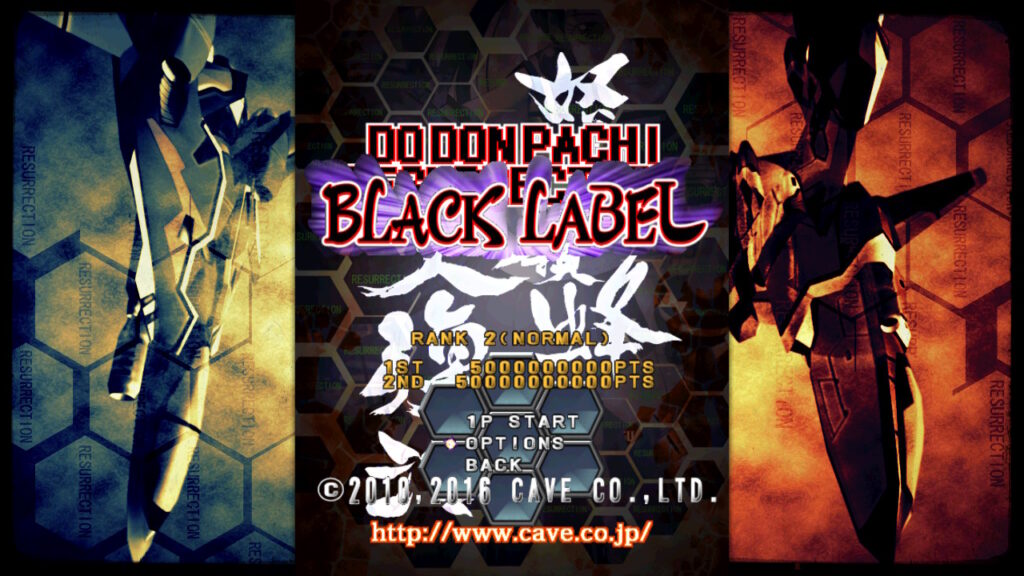
In this rank system, you have a gauge that fills as you dodge closer and closer to more and more bullets, ranking higher and higher. Max out that rank and use a hyper and the whole screen turns into a massive pile of scoring medals. The effect only lasts so long but there are tricks to prolong it, driving your score into the billions and making for a spectacular show! Then the only trick is to survive the boss without dying to capitalize on all those extra medals! It’s a tricky system that takes a ton of practice, reflexes of near-robotic proportions, and a bit of luck. But it’s fun as all hell when you pull it off!
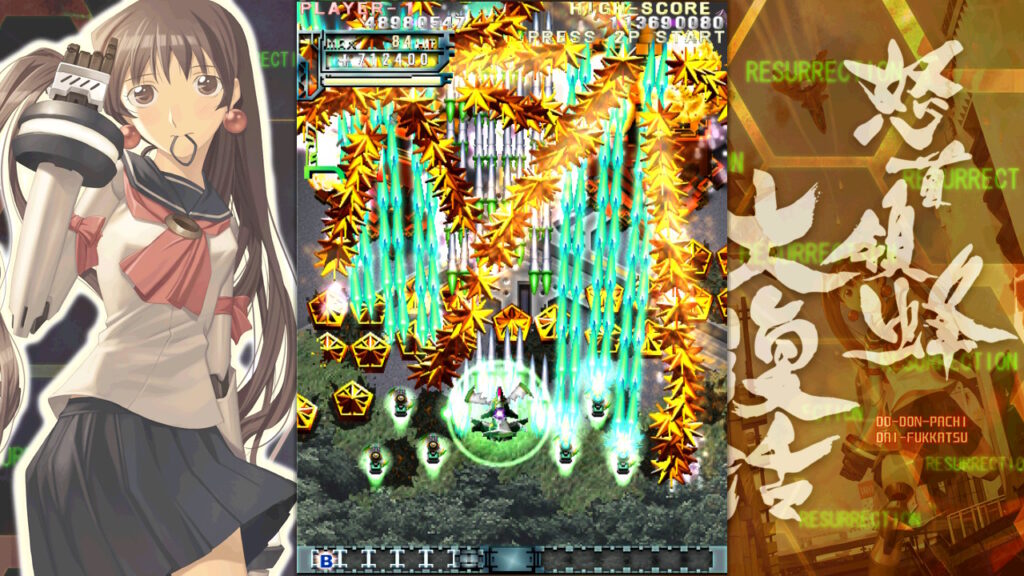
We’ve seen six (yes, SIX) different modes in DoDonPachi Resurrection, but there’s still a bit more to go! In addition to DDPDFK Black Label, there’s also an arrange mode for Black Label. In this arrange, you can use the ship from Ketsui, the smash Cave hit from 2003. But the Cave team didn’t just toss the ship in. They also tossed the mechanics from Ketsui into the game and you’ll be collecting chip blocks in order to multiply your score, switching rapidly between firing and lock on to maximize chip values if you want to really get those insane scores. Oh, and just like DDPDFK 1.5, there’s also a Black Label novice mode tossed in, allowing you to warm up on the Black label mechanics as well! Seriously. Eight modes, one game, and they’re all insanely awesome.

At this point, you’re probably wondering if that’s it. For modes it is, but LiveWire has some other goodies in store. Every single version of DDPDFK on Resurrection has a score attack mode and a training mode, and you can also save replays of your gameplay to the Switch, letting you refine your strategies or just enjoy the visuals since you can barely see them while you’re in the midst of gameplay. And the visuals are something to behold in DoDonPachi Resurrection.
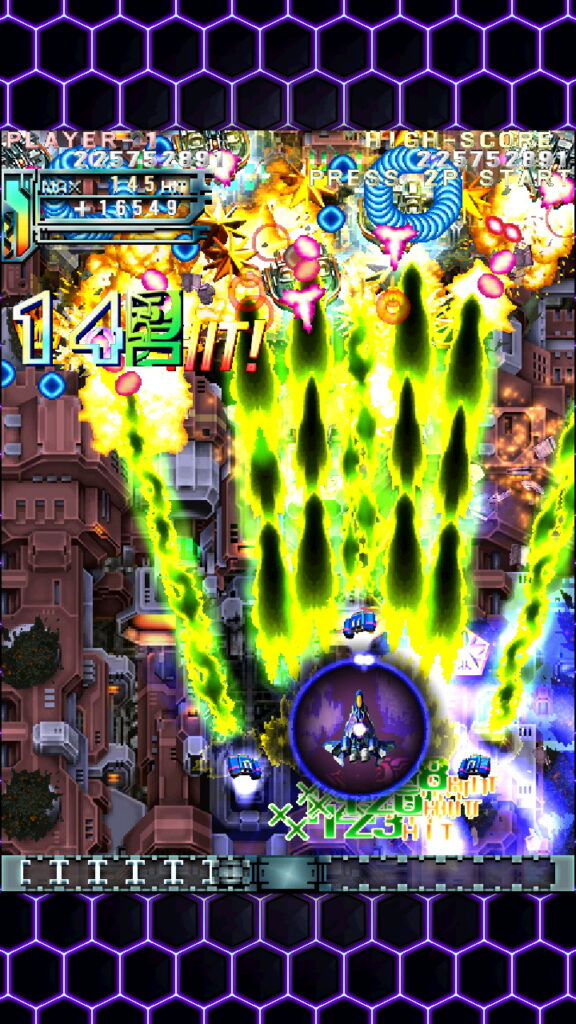
Cave is the master of shmup sprites and enemies, backgrounds, and complex bosses are absolutely stunning to look at. This really is the height of pixel art and to top it all off, the bullet patterns are almost hypnotic in their high-speed complexity. This is as much a work of art as a shmup, and definitely worth a closer look on those terms. The soundtrack is also utterly spectacular, and Cave is known for both their outstanding soundtracks and releasing them so fans can enjoy them. Sadly, there’s no music player on the game, but the thumping electronic beats will suck you in as you play, don’t worry there!
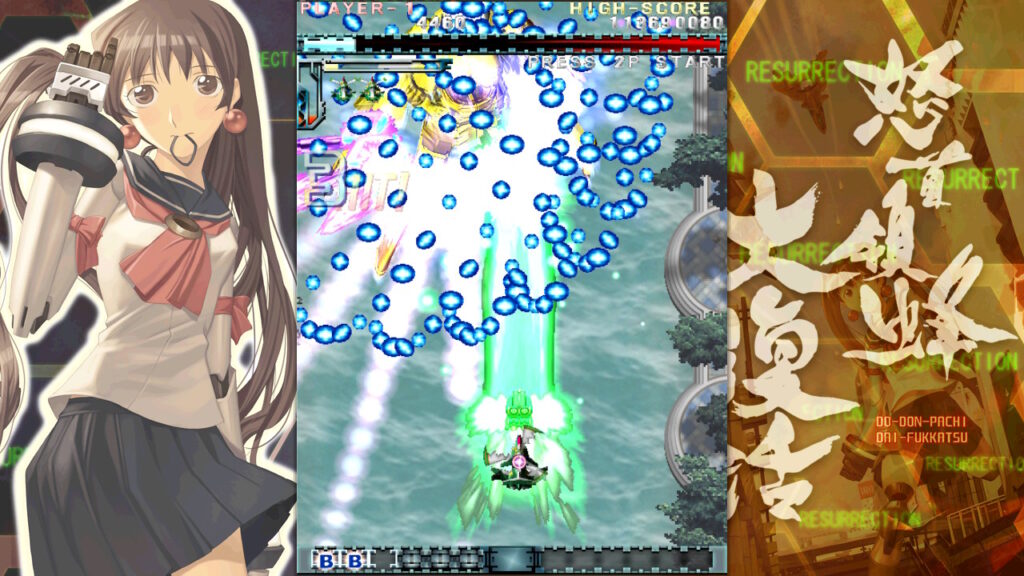
Last but not least is the plethora of visual options included with every version of DDPDFK on Resurrection. The horizontal and vertical screen sizes are fully adjustable and you can stretch the entire game to fit a wide screen vertical monitor or TV if you want to. It’s not recommended though, as the stretch would definitely make the game harder! You can change aspect ratios, rotate the screen, link rotation between game versions, add extra windows, chance scoring details, and more. DoDonPachi Resurrection is also compatible with the Flip Grip, allowing you to play in TATE (vertical) mode handheld on an original Switch and adjust the settings to near full screen. The rest of the screen is taken up by wallpapers. Cave went for broke here and tossed in 47 different backgrounds for every screen orientation and preference you can imagine, so the sky’s the limit when setting the game up! Oh, and you can remap all the buttons too, and change difficulty, number of ships on continue, and even the extend values to earn extra ships (don’t be a credit feeder)! That’s a heck of a lot of versatility!

For a small package, DoDonPachi Resurrection packs a massive punch, tossing in eight modes, a ton of wallpapers, the ability to tweak almost everything, and on top of it all, one of the finest-tuned games available to play. The Switch Pro controller is excellent for gameplay and highly responsive for Resurrection (though it’s no Sanwa arcade stick). You might want to reconsider playing on the Joycons though…they’ll work, but they’re definitely not the ideal controller for a game this precise. At $20, you’re getting a hell of a lot of bang for your buck here so it’s really hard to complain. This is possibly one of the best vertical bullet hell shmups ever to be released, available portably, arcade perfect, and a damn good time as well. Simply put, if you’re even remotely interested in the genre, DoDonPachi Resurrection is a must-buy. Time to enter bullet hell…you won’t regret it!
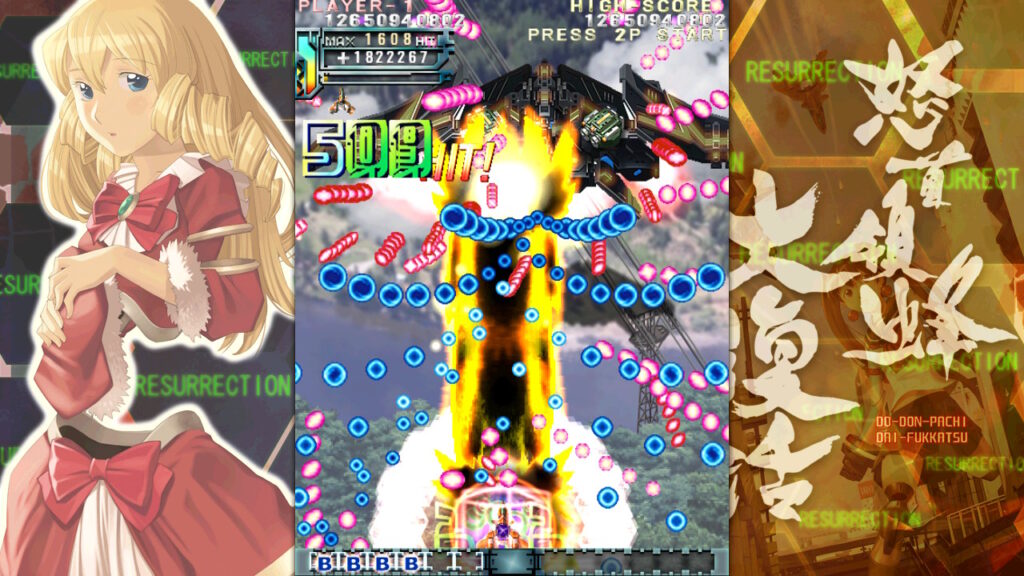
This review is based on a digital copy of DoDonPachi Resurrection provided by the publisher. It was played on a Nintendo Switch in both docked and undocked modes with both Joycons and a Switch Pro Controller. The Switch Pro Controller is recommended for DoDonPachi Resurrection. This release of DoDonPachi Resurrection is a Switch exclusive.

